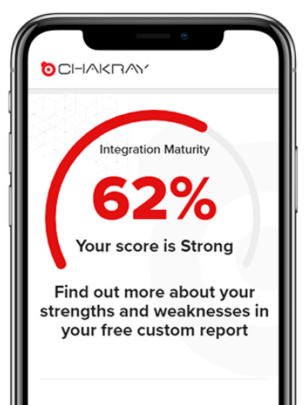The first thing that comes to mind when we talk about the digital transformation of the retail sector today is the significant event that has affected to the industry, the COVID-19 pandemic. However, it would not be entirely correct to say that this is the only factor that has driven major changes, such as government constraints (distancing, opening hours, shop closures, etc.).
According to a Deloitte survey, the US retail digital transformation industry investment trends for 2021 are:

Retail Investment priorities for 2021
As the above results reveal, the demand for digitalization has accelerated. While these changes may take months or years, one thing we can be sure of is that digitalization constitutes an important decision that offers innumerable benefits.
Digital transformation is a trend that has now been around for several years and regardless of the pandemic, digital transformation has been pushing retail companies in recent years. The need within companies to digitally transform and set themselves apart in 2021 and beyond is urgent as the number of digital interactions has increased to unprecedented levels.
A large number of companies that have taken care to implement their digital transformation process have been able to continue operating and generating profits despite intermittent business closures due to fluctuating COVID-19 cases and government constraints. This has been key to keeping the global economy afloat.
In 2020, Euromonitor International estimated an 81% reduction in shopping process in physical shops. However, in a recent study the same company estimated that by 2025, 76% of goods will still be purchased in physical shops, although over the last year much attention has been paid to the rise in e-commerce and the move away from shops, physical outlets remain a fundamental part of the shopping journey in today’s retail market. At the same time, Global Market Insights Inc. forecasts that retail sector revenues will amount to USD 25 million by 2027. Overall, the retail sector continues to grow in both physical and online shops, but the buying and delivery processes are now evolving in line with the new market realities.
The robust expansion of the e-commerce sector, coupled with growing need for retail sector companies to provide distinguished in-store experiences to their customers has strongly driven the adoption of analytics in the retail industry.
The deployment of analytics by online as well as offline retail industry stakeholders has increased to a great extent due to the numerous advantages involved, such as monitoring of supply chain movements, inventory levels, buying decisions, consumer demand, etc.

Global retailing according to 2015-2025 type
Transforming and differentiating digitally in the retail sector
We are at a pivotal moment, and it is time to digitally set yourself apart from the competition, whether it is a supermarket, department store, fashion store, furniture store, bookstore, pharmacy, etc. New industry rules require innovative ideas that boost profitability.
This article discusses some key trends in the digital transformation of the retail sector that will enable companies to efficiently implement the best strategies for higher profits and greater customer reach. Topics such as customer service, after-sales, and the importance of customer security today are explored. It will also explain the meaning of the total user experience is.
The pandemic has changed the rules of the game. Here are the trends to keep in mind when implementing strategies to digitally transform and differentiate:
- Contactless shopping experiences
- The improvement of the customer service and after-sales service.
- Security and privacy
- The optimization of the inventory and supply chain management.
- Total experience
Contactless shopping experiences in retail’s digital transformation
Over the last two years, contactless shopping experiences have been booming, and they’re here to stay, in many cases due to the reduced risk of COVID-19 infection, generating trust through shopping processes that put the user’s health and security first. However, they also reduce the time of the shopping process by offering a speedy solution for modern life.
One example is the implementation of curb side pick-up or out-of-store pick-up, and although it was previously a method widely used in restaurants, it has increased in demand in the last two years for multiple types of businesses, be they department stores, clothing stores, sports stores, technology stores, bookstores, pharmacies, and supermarkets.
A key case in point is Starbucks, where sales and delivery processes have changed. They have determined that a large percentage of customers prefer a contactless experience through the mobile app and pick-up service located outside the shop.
The Starbucks app allows contactless digital payments in-store, as well as in-app ordering for in-store or curb side pick-up.
It is important to question how we could improve current process implementations, as curb side pick-up is the present and the future, and digital transformation is key, whether it is to provide faster pick-ups, or with a lower risk of contact, or even to allow customers to enjoy a 100% contactless service. Now, think about how we can also optimize a process such as pick-up and how we can benefit from analysing the customer purchase data, for example to predict shopping behaviour, to provide a better user experience, thus achieving the differentiation we are looking for.
Improvement in customer and after-sales service in the digital retail sector
After-sales service encompasses all customer service actions once the sale has been made. The goal is to maintain an optimum relationship with the customer in order to build loyalty, while at the same time projecting a good brand image.
In the new global context of COVID-19, we have all turned to the Internet as an ally to spend our time, work, have fun and, last but not least, shop online.
When it comes to online shopping, advertising is one of the most important aspects of product awareness, but consumers value delivery times and after-sales services are also far more relevant these days. For example, if we aim for differentiation through after-sales service, the implementation of omni-channel strategies that provide a complete view of customer interactions would enable companies to respond to customer queries more effectively and efficiently.
Security and privacy in the digital retail sector
Security and privacy when it comes to customer information should be essential. This is a very sensitive and important area for any retail company, yet according to Deloitte, in a recent survey, only 5% of consumers ranked the digital industry of the retail sector as one of the top-three industries for data privacy, compared with 63% for banks.
Security breaches are back in the spotlight due to cyber-attacks. There could be security breaches in the processes of health data collection by employers, as well as the processing and collection of customer health data e.g., in the use of vaccination passports.
Sometimes we are not aware of how sensitive the data we share with platforms and applications on a daily basis truly is. Data such as our name, address, phone number, email, payment information, location, contacts, among others, can be considerably sensitive.
Nowadays, a significant proportion of the processes and data are stored in platforms and applications, and when working with this sensitive data it is necessary to be aware of the responsibility retailers have to protect it. Users deserve protection and privacy of their information. In order to protect shoppers, retail companies must be honest with their customers about how secure their systems are and their ability to resolve data security issues.
Therefore, just as customer service and privacy is a priority in the banking sector, so too should it be in the retail sector. We must question whether the platforms and solutions we make available to our customers are secure and provide platforms that are as secure as those of the banks. Ensuring customer security and privacy can be a way to set ourselves apart from the competition.
Optimization of inventory and supply chain management
A fact that stood out in 2020 and 2021 in the digital transformation of the retail sector is that many companies were not prepared for the current situation and many of them are still unprepared. Some necessary questions to ask if a company is in the digital retail sector are:
- Does the company have supplying or inventory management strategies in place to withstand supply chain failures and defects?
- Is the business model agile enough to stay relevant in the market? Or is it obsolete?
Demand for integration services and the implementation of solutions to optimize inventory and supply chain management increased by almost 40% in 2020, according to Deloitte, and is expected to continue to increase significantly, as they help companies in the retail sector to successfully implement data analytics solutions integrated with the existing infrastructure of business intelligence.
Solutions that enable the integration of various supply chain activities and the use of artificial intelligence could play a role in the optimization of these processes, predicting failures and defects.
The use of artificial intelligence has significant value for the entire supply chain management process, reducing idle time in production and logistical systems. Another great benefit of the use of artificial intelligence is the prediction of the demand for products and services, as well as the implementation of mechanisms capable of perceiving and notifying the variations produced in the markets. In addition, it is able to make decisions at the best times, implementing adaptable and flexible supply and inventory management strategies.
The rapid growth of e-commerce has also driven the adoption of advanced analytical solutions in the retail industry to minimize bottlenecks and improve supply chain efficiency through the use of analytical tools that help in effective inventory planning and obtain accurate forecasting. Considering the key role of these tools, the supply chain management segment is estimated to witness a remarkable compound annual growth rate of more than 15% since 2017.
Another benefit of the optimization of supply chain processes is the improvement of production and transportation capacity according to the actual need of customers. This not only eliminates the problematic whiplash effect, but also avoids stock outages, optimizing lead times and reducing unnecessary inventories.
Total experience in the digital transformation of the retail sector
According to Brian Burke, Vice-President of Research at Gartner, “Total Experience is a strategy that connects multi-experience with customer, employee, and user experience disciplines”. We could, on the other hand, show it in the following mathematical formula:
Total Experience (TX) = Customer Experience (CX) + Employee Experience (EX) + User Experience (UX).
To delve into the concept then, it will be necessary to explore each of its component parts:
- Customer Experience (CX): is defined as consumer’s conscious and subconscious perceptions of their relationship with a brand as a result of all interactions during the brand’s lifecycle.
- Employee Experience (EX): refers to the set of situations that an employee experiences throughout their relationship with the company, from first contact to disengagement.
- User Experience (UX): is defined as the set of factors and elements related to the interaction process of a user with respect to a product or service.
In other words, we must use technology focused on people, whether they are consumers or workers, in order to achieve this total experience. Among the technologies that can help us adopt this new trend are the Internet of Things, machine learning, artificial intelligence, among others.
According to Gartner, companies that manage to develop a Total Experience will achieve a very important competitive advantage and will surpass their competitors in key satisfaction indicators over the next three years.
According to PwC, speed, convenience, and friendly, helpful service are most important. In fact, customers are willing to pay up to 16% more for premium services that guarantee these elements. In contrast, one-in-three customers will seek a change of provider after a single bad experience.
The benefits of providing the total experience include:
- Improved brand image and reputation, plus reduced marketing spending.
- Increased sales and customer or user loyalty.
- Increased number of customers or users.
- No more silos.
If you want to know how Chakray helps retail companies address the challenges of digital transformation through integration, contact us!
Sources:
- Rodney R. Sides, Lupine Skelly, and Rob Goldberg, “The next chapter of data privacy: Building a new currency with digital trust,” June 2020
- 2021 retail industry outlook: The new rules of retail
- https://technocio.com/la-economia-de-las-experiencias-como-base-de-la-transformacion-digital/
- https://www.globenewswire.com/news-release/2021/08/17/2281696/0/en/Retail-Analytics-Market-2021-2027-Top-5-trends-enhancing-the-industry-expansion-Global-Market-Insights-Inc.html
- https://www.bci-consulting.com/es/2021/06/17/a-que-llamamos-experiencia-total/







